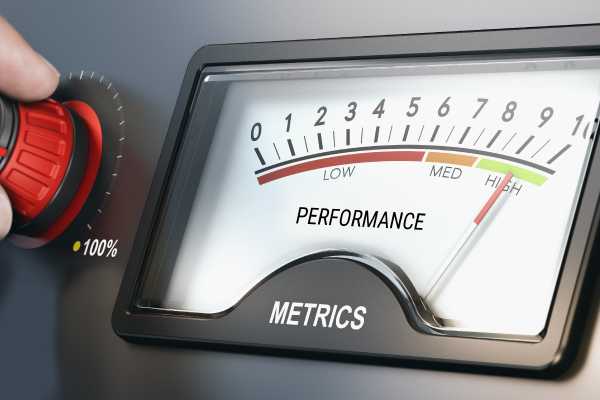Optimising a company's performance by eliminating waste and improving efficiency. That's the aim of lean management. Applied mainly in industry (lean manufacturing), it is above all a state of mind to be adopted in order to continually improve the company's processes. So what makes lean management an effective methodology? What are the main tools? What are the key stages in setting up a lean system? What are the challenges and limitations of implementing a lean system? Find out from Pierre Sarramaigna, an expert in management, production management and operational excellence.

"Lean management is above all a philosophy, a culture of improvement identified by behaviours based on easy-to-use tools". Historically, lean was first widely deployed in various industries: automotive, aeronautical, pharmaceutical, etc. The concept was developed by Toyota in the 1950s, with the implementation of the Toyota Production System (TPS), a new way of managing industrial activities. The aim was to eliminate any activity that did not add value for the end customer.
This success calls for a team of researchers at the end of the 80s. The conclusion was that Toyota's TPS could be applied in every company, in every sector, in every country. Hence the birth of the term "lean". Ten years later, the book The Machine That Changed the World (1991) helped popularise the lean manufacturing philosophy and inspired many companies to adopt this approach to improve their efficiency and competitiveness.
Since then, lean management has incorporated other concepts and methods linked to thecontinuous improvementsuch as the theory of constraints, the Six Sigma® methodology or Agile methods. The objective remains the same: the search for optimisation and a need for efficiency to aim for performance at all levels of production.
What fundamental principles?
The principles of lean management include continuous improvement, optimisation of processes and production flows, employee commitment and compliance with quality rules and standards. The aim is to create a flexible company, capable of responding quickly to customer demands while minimising costs and production times. In other words, the aim is to set up a a culture of continuous improvement eliminating waste ("muda" in Japanese) in a production or service system, in order to maximise added value for customers.
Eliminating waste
Waste can take three different forms depending on its nature:
- Muri: the saturation of a resource, a task that is excessive, too difficult or even impossible;
- Mura: variability phenomena ;
- Muda: tasks with no added value.
Typology of muda
- errors, defects and rejects ;
- waiting times and deadlines ;
- unnecessary inventory;
- unnecessary transport and handling (of products);
- unnecessary movement and displacement (of employees) ;
- under-utilisation of skills.
Among these types of waste, there are two specific examples:
- overproduction (producing too much or too soon), which affects the company's finances;
- over-processing (superfluous operations, over-quality controls).
A distinction is therefore made between time with added value and time without added value: everything that is necessary to create added value (switching on machines, changing tools, etc.) and wastage.
Other key principles
Another fundamental principle is to take stock of the situation on the ground. This involves meeting operational staff (production, logistics, etc.), identifying problems (quickly) and determining their causes, and applying collective intelligence to resolve them. This is the Gemba Walk principle.
Lean requires a certain methodological rigour. "This is the prerequisite for the long-term viability of the tools". In other words, it's a question of collectively determining the rules, complying with standards and norms (ISO 9001 for quality management, HACCP for the food industry, etc.) "and maintaining them at a high level of adherence, or even developing them".
In addition, employee commitment - at all levels (production lines, management, support functions, etc.) - is imperative if the tools are to be adopted. Once these fundamentals are in place, the next step is to propose effective, sustainable solutions.
"It's all about solving problems in the long term".
What tools?
A "toolbox" is being put together to implement lean management in industry. It includes a variety of tools:
- value stream mapping: SIPOC, Swimlane diagram, VSM, etc.
- process diagrams designed to problem solving Ishikawa, 5 reasons, QRQC ;
- visual: 5S, visual management, standardisation...
- "Just-in-time": Kanban, Takt Time, push/pull flow ;
- strategy: "Hoshin Kanri" to deploy the corporate vision.
The 5S method, an efficient visual tool
The 5S method is a quality organisation and management technique. The aim is to improve and secure the working environment. The method was originally used in production workshops, then in offices and departments. Using tables, then dematerialised solutions (SQCDP) for real-time display, performance indicators are recorded and deviations are measured during the 5 key stages: sorting, tidying, cleaning, standardisation and improvement. This visual tool makes it easier to get used to.
Lean, for whom?
Lean management can be applied in all types of company. The question is whether there is a team dedicated to its implementation, whether lean is an integral part of the strategy... in which case, the company must report on it, under cover of standards and certifications. In small companies, there are generally no dedicated people. The directors of very small businesses and middle managers are therefore being trained in this area.
What are the key stages, and what is the strategy?
Implementing the lean methodology in an industrial company generally involves the following stages:
- identification of key processes ;
- identifying waste ;
- process improvement ;
- Establishing a culture of continuous improvement;
- standardisation of improved processes.
These key stages vary according to the company's strategy. If the method is to be fully deployed - over 3 to 5 years - then an objective and a transformation plan need to be defined. "It's all a question of preparation before implementing lean management". The actions to be taken include appointing project leaders, carrying out the pilot project and then replicating it so that " Lean becomes an integral part of the team in a sustainable way ".
"Lean is a path to sustainable performance".
Whatever the case, you need to establish a performance diagnosis, identify sources of improvement, carry out regular pilots and sustainable improvement actions. This is the aim of the Kaisen projects. Not forgetting the awareness-raising actions: training, regular support to "facilitate the progress of projects and reassure teams", and co-development activities. Not to mention feedback to "improve standards and develop best practice within the company". The key factor for success: the presence and involvement of management and top management, and the definition of clear objectives and action plans. These are essential conditions for implementing lean management.
What are the limits and what are the solutions?
Deploying lean management can come up against a number of obstacles. First of all, we need to ask ourselves the following questions: what meaning do we give to a lean approach? Is this meaning shared?
Secondly, there are several ways of implementing lean. So we shouldn't focus on the tools, but rather "make them our own and adapt the concepts without losing sight of common sense". Lean management should improve performance and team commitment. Provided you have sufficient resources to achieve this. "You have to persevere, because the effects are not necessarily immediate". And there are many challenges. Implementing a lean system involves :
- inform and explain to teams: define everyone's roles, get people involved on a voluntary basis ;
- Reassurance: by enlisting the support of an in-house or external expert, particularly when embarking on a 5S project, for example;
- Don't be over-ambitious: aim for small successes by minimising the effort involved using simple, effective tools;
- be consistent: it's all about carrying out projects over the long term, insisting, being convinced and convincing people of the effectiveness and value of the lean approach.
"Lean maturity remains moderate across all companies. This approach is less obvious for small and medium-sized businesses, and very often there has been no upstream work on process improvement". So the real challenge is to raise awareness among small businesses to acculturate them to lean management. This challenge requires the implementation of basic projects such as 5S and company routines.
Key points to remember: lean management is an effective methodology for improving industrial processes, as well as a mindset to adopt in order to continually improve business processes. This approach can also be deployed in other areas or sectors of activity: IT, construction, banking, health, etc.





